10+ SAMPLE Meeting Appointment Letter
-
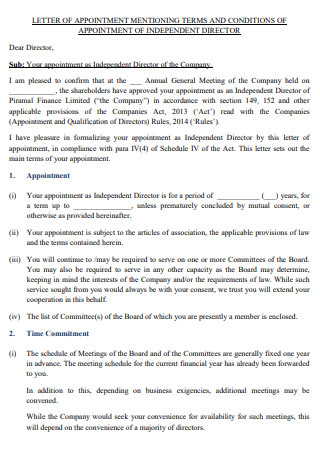
Meeting Appointment Letter
download now -
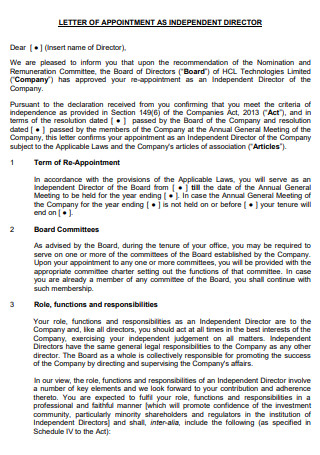
Meeting Appointment Letter As Independent Directors
download now -

Company Meeting Appointment Letter
download now -

Meeting Re Appointment Letter
download now -

Meeting Intake Appointment Letter
download now -
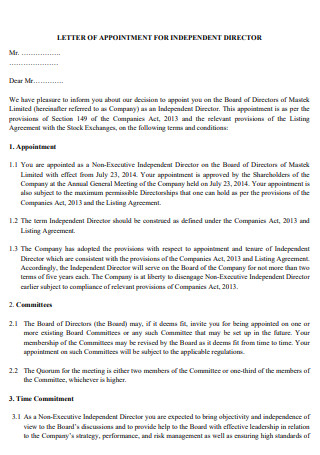
Meeting Appointment Letter for Independent Director
download now -
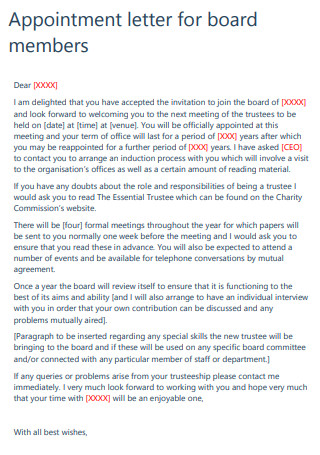
Board Members Meeting Appointment Letter
download now -
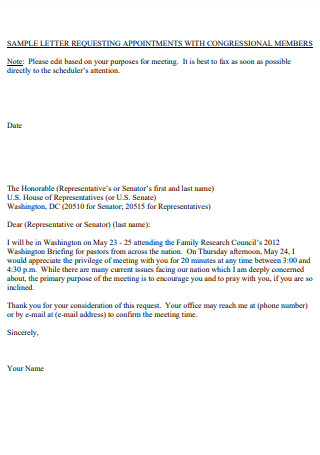
Meeting Request Appointment Letter
download now -
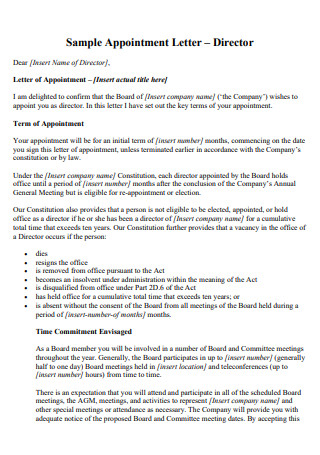
Annual Meeting Appointment Letter
download now -
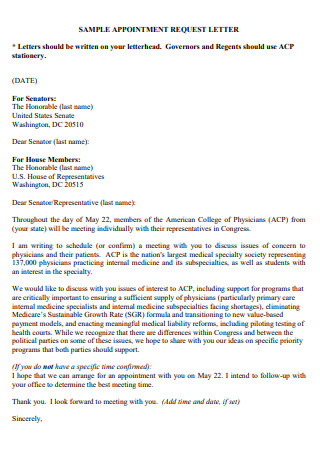
Meeting Appointment Request Letter
download now -
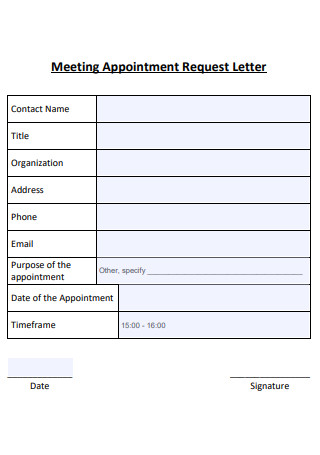
Sample Meeting Appointment Letter
download now
FREE Meeting Appointment Letter s to Download
10+ SAMPLE Meeting Appointment Letter
What Is a Meeting Appointment Letter?
Importance of a Meeting Appointment Letter
How to Write a Meeting Appointment Letter
Tips for a Successful Meeting Appointment Letter
FAQs
What to prepare before you send a meeting appointment letter?
What are the advantages of scheduling a meeting by email?
What to do if there is no reply to the meeting appointment letter?
What if the meeting appointment letter was rejected?
What Is a Meeting Appointment Letter?
A meeting appointment letter is a formal document that requests that someone or a group of people attend a planned meeting. A manager or supervisor who wishes to meet with a Business partner, potential business partner, client, or prospective client will generally write a meeting appointment letter. The purpose of a meeting appointment letter is to inform the receiver of the letter of a forthcoming meeting as well as the meeting’s important information. The meeting appointment letter generally includes the time, location, schedule, and other important data. You can use the available meeting appointment letter example provided in this article.
Importance of a Meeting Appointment Letter
When an organization or an individual has to define the details of a meeting with another organization or individual, such as the purpose of the meeting, meeting Appointment Schedule, and meeting cancellation, a meeting appointment letter is generally necessary. It will come in handy in the following situations:
How to Write a Meeting Appointment Letter
Now that the definition of the meeting appointment letter has been elaborated and the importance and example scenarios given, it is finally time to move on to the guide in writing your own meeting appointment letter. If you don’t want to start writing from scratch, then you are in luck because there are available business meeting appointment letter samples that you can freely use as a reference. These step-by-step processes will assist you in making an effective meeting appointment letter. You should make sure though that your company has no set template, otherwise, you should ask for a consultation with your supervisor for the set company format.
Step 1: Choose a format
Before drafting the first word of the letter, an individual or organization should think about the format of the meeting appointment letter. When deciding on a meeting appointment letter format, keep in mind that the message in the letter must be clear and easy to understand. As a result, selecting the appropriate typefaces and font sizes is crucial when writing a meeting appointment letter. The use of a letterhead establishes the organization or individual authoring the meeting appointment letter’s professionalism immediately. The letterhead also introduces the organization represented by the meeting appointment letter at first sight. Because the meeting appointment letter is a business letter, it should be written in that manner, especially when it is sent to organize a meeting between two or more companies to talk business.
Step 2: Introduction
The Meeting appointment letter’s introductory section should include all of the features of a formal letter’s introduction section. On the first line of the meeting appointment letter, write the date on which the meeting appointment letter was written. On the following lines, the details of the person who will be receiving the meeting appointment letter should be listed after the date. A greeting is required at the start of a letter of appointment for a meeting. The greeting is used to address the meeting appointment letter’s addressee, and it must be formal. The meeting location should be mentioned for all persons concerned, as well as a specific address of the location be it within the company ground’s Office or some place else that has been agreed upon by a supervisor or higherup. The meeting appointment letter must provide a recommended meeting time and date. The meeting’s length would allow all parties involved to select a time that was convenient for them.
Step 3: Body paragraph
The aim and goal of the meeting must be stated in the body paragraph of the meeting appointment Letter. Because the body paragraph is the most important portion of the meeting appointment letter, it should provide the most important details regarding the meeting. As a result, the body paragraph of the meeting appointment letter should include the following. The purpose of the meeting’s convening must be expressed explicitly. It has to be significant and meaningful to all parties concerned. The benefits of attending the meeting and the objectives that the meeting seeks to achieve should be stated in the meeting appointment letter’s body paragraph. In principle, a meeting involving two or more participants should strive to benefit all parties concerned.
Step 4: Conclusion
The meeting appointment letter should end with a summary of the meeting and other essential facts about the meeting in the conclusion paragraph. At the conclusion of the meeting appointment letter, the sender should provide the following components. Requesting a follow-up from the meeting appointment letter’s recipients is good since it ensures that the schedule is convenient for both parties. It also guarantees that people show up. The sender must also include their signature as well as the signatures of any other relevant parties who are seeking the meeting. The sender’s Contact Information should also be provided in the conclusion paragraph to make it easier for the receiver to follow up and respond.
Tips for a Successful Meeting Appointment Letter
A meeting appointment letter, like other formal letters, must be properly written, succinct, and compelling enough to successfully express the importance of the meeting. Here are some pointers on how to write a good meeting appointment letter:
FAQs
What to prepare before you send a meeting appointment letter?
It’s a good idea to telephone the person’s secretary or reception to confirm their availability. The last thing you want is a back-and-forth of emails attempting to set up a meeting engagement. From the start, aim for success. This is, of course, optional. Make certain that you are available. Many people overlook the fact that they already have other obligations at the meeting’s scheduled time. Verify that the person’s employment title, position, and name are correct. Make sure you do your homework. Depending on the circumstances, you may need to consider offering incentives to enhance the likelihood of the appointment being made.
What are the advantages of scheduling a meeting by email?
A Meeting Email Requests or a meeting appointment letter request that you and the receiver meet at a specific time, date, and location. In certain situations, you may be confirming a previously agreed-upon time. There are several advantages to organizing a business meeting through email. You and the receiver can refer to the email for meeting specifics afterward, such as the location, time, and place, as well as contact information and the meeting’s purpose. With only a few clicks, you and the receiver may move the meeting’s information to a calendar or organizing tool. Links to RSVPs and instructions can be sent in an email. You may control the correctness of the meeting’s time, venue, and date with an email. When you plan a meeting verbally, there’s a risk you’ll make a note-taking mistake.
What to do if there is no reply to the meeting appointment letter?
You requested a meeting but received no response or appointment confirmation letter. That’s OK; don’t be concerned. It’s conceivable that the recipient did not get your meeting invitation in the first place, that the scheduling or location was inconvenient, or that the meeting’s purpose was uninteresting or irrelevant. Send a follow-up email addressing each of these issues if you find yourself in this scenario. Check with the receiver to see if they got your initial request. Inquire about the recipient’s preferred day, time, and place. Reiterate how crucial the meeting is to the other person. Otherwise, be sure to inform your supervisor if there are participants who are uncomplying with the letter and bring to their attention the cause of it.
What if the meeting appointment letter was rejected?
Well, it all depends on why you were rejected in the first place. If the moment isn’t right, suggest something else. If the location isn’t ideal, suggest a different one. If the meeting’s purpose isn’t compelling enough, revise your offer to make it more enticing. Don’t be too adamant about it. Whatever the cause, express gratitude for their response and time. Don’t take it personally but some employees or clients may be overwhelmed with their current situation or tasks and may respond in a rather unpleasant manner. Try to understand that they may have a lot on their plate and see through their eyes where their priorities lie.
Coming up with a meeting appointment letter may be a challenge if you do not know where to start, how to begin, or what the contents should be within the letter. This article not only guides you through the challenges but also clarifies the importance and benefits there are to make one. Staying organized and formal will be more than appreciated by your company supervisor. Hence, setting an appointment meeting letter samples have been provided for you to ease up your life and save you the hassle of starting solely from scratch or without any knowledge to go about it. A formal meeting invitation will boost the reputation of the company towards the client but also with how they will view you at performing excellently in your task.
